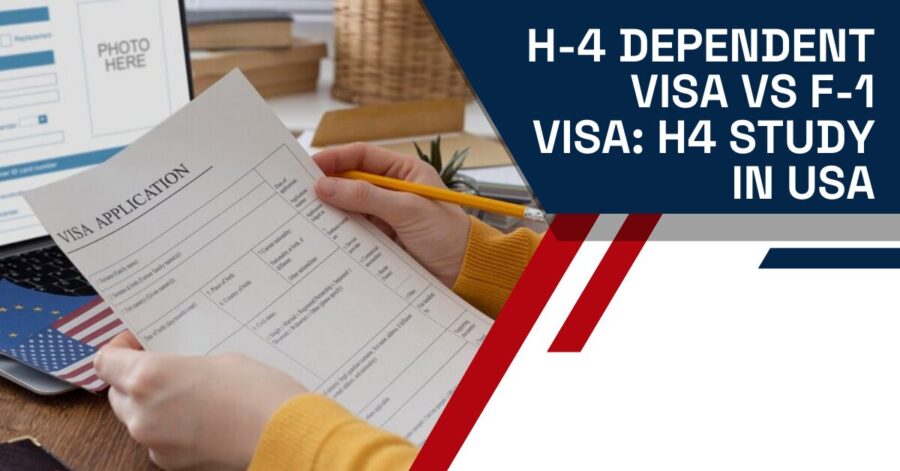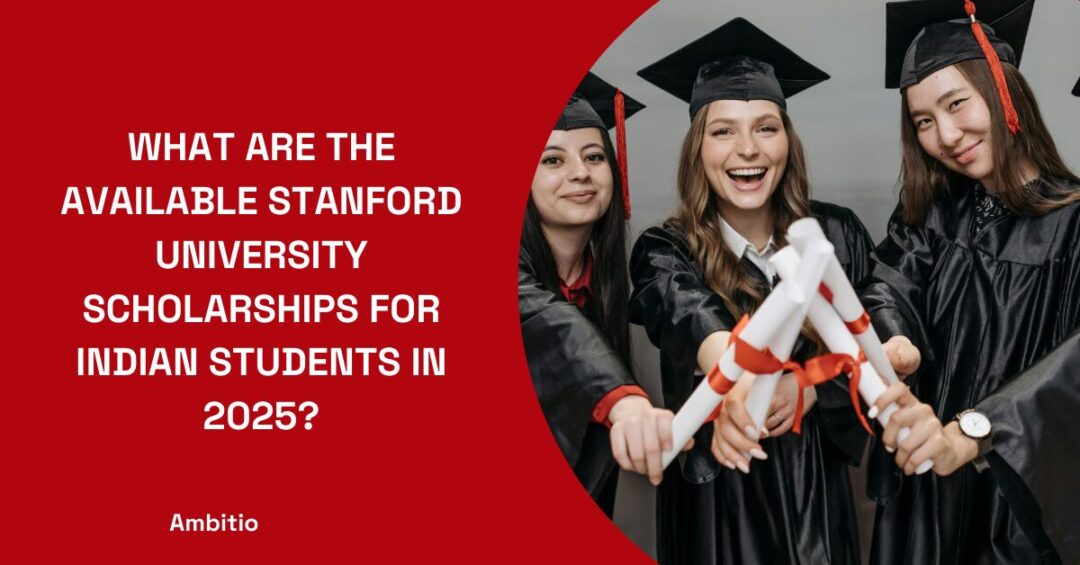17 October 2024
7 minutes read
H-4 Dependent Visa VS F-1 Visa: H4 Study In USA

Key Takeaways
- H-4 visa holders can study in the U.S. with fewer restrictions and may qualify for in-state tuition and work authorization through an EAD.
- F-1 visa holders benefit from OPT/CPT programs but face higher tuition and stricter work limitations.
- Your choice of visa should align with your education goals, work plans, and long-term career aspirations in the U.S.
Did you know that over 600,000 international students hold F-1 visas in the U.S., while many H-4 (h4 study in USA) visa holders are also pursuing their studies? Choosing between an H-4 dependent visa and an F-1 visa can be a challenging decision, especially when it comes to studying in the U.S. Both visas offer unique benefits, but they also come with specific restrictions that could significantly impact your academic journey. It is as important as understanding the difference between public and private universities in the USA.
For many students on H-4 visas, the uncertainty around work authorization and access to scholarships can create roadblocks. On the other hand, the F-1 visa comes with its own set of challenges, such as higher tuition fees and visa maintenance requirements. However, understanding your options and how each visa aligns with your goals is the first step toward making an informed decision that best supports your education and career aspirations.
What Is An H-4 Dependent Visa?
An H-4 dependent visa is a nonimmigrant visa granted to the spouses and children of H-1B visa holders, allowing them to live in the U.S. while the H-1B visa holder works. As an H-4 visa holder, you can stay in the U.S. and, under specific conditions, be eligible for an Employment Authorization Document (EAD), allowing you to work part-time or full-time. This visa also permits H-4 dependent spouses to study full-time in the U.S. and potentially qualify for in-state tuition. However, work authorization and eligibility for benefits like optional practical training (OPT) or curricular practical training (CPT) depend on your visa status and situation. There are many distance-learning colleges in the USA, but the benefits of attending a college in person is always higher.

While H-4 visa holders may face restrictions, such as needing an EAD to work in the U.S. or not being eligible for some practical training opportunities that F-1 international students receive, many still choose to pursue education or employment. Make sure whether you need SAT to study in the USA or not.
If you’re planning to study, you’ll need to meet with your designated school official (DSO) and navigate the visa application process, including attending a visa interview at a U.S. embassy or consulate. For those seeking employment or wanting to pursue a green card, understanding the options for transitioning to an F-1 visa or gaining work authorization is crucial.
What Is An F-1 Visa?
An F-1 visa is a nonimmigrant visa that allows international students to study full-time at accredited U.S. colleges or universities. Unlike the H-4 dependent visa, F-1 visa holders are generally not allowed to work in the U.S. without proper authorization, except for limited on-campus work or through programs like Optional Practical Training (OPT). Students on F-1 visas must schedule a visa interview at a U.S. embassy or consulate and meet eligibility requirements such as demonstrating financial ability and a clear intent to return home after their authorized period of stay.
While F-1 visa holders are required to pay out-of-state tuition in most cases, some may be eligible for in-state tuition fees if they meet specific residency requirements. Make sure you have a clear idea of an affordable masters degree in USA.
However, unlike H-4 EAD holders who may work in the U.S., F-1 students face certain disadvantages, such as not being able to work freely without OPT or CPT authorization. For those transitioning from an H-4 visa and choosing to study, it’s important to check with the university or college regarding residency status, tuition eligibility, and the advantages and disadvantages of the F-1 visa in your field of study.
What Are The Advantages Of Studying With An H-4 VS F-1 Visa?
When comparing the advantages of studying with an H-4 visa versus an F-1 visa, both visas offer unique benefits but cater to different circumstances. For H-4 visa holders, particularly those who are eligible for an H-4 EAD (Employment Authorization Document), the ability to work in the U.S. while studying is a major advantage. Additionally, if you have lived in a state for at least a year, you may qualify for in-state tuition, significantly reducing your educational costs. H-4 visa holders can also pursue higher education without the need for a work visa like the H-1B, as long as they remain in valid H-4 visa status. Moreover, the flexibility to change your visa status from H-4 to F-1 if you later decide to focus solely on education is an added benefit. Use a GPA calculator for MS in USA to have a clear idea of where you stand academically.
On the other hand, F-1 visa holders are international students who can take advantage of Optional Practical Training (OPT) or Curricular Practical Training (CPT) to gain work experience related to their field of study. However, F-1 students generally must pay out-of-state tuition unless they meet specific residency requirements. They are also limited to working 20 hours per week on campus during the academic year. Additionally, F-1 visa students cannot work freely in the U.S. like those on an H-4 EAD, but they may be eligible to apply for an EAD for OPT. Overall, while F-1 offers the advantage of practical training, H-4 visa holders, particularly spouses or children of H-1B visa holders, enjoy more flexibility in work and tuition costs, making the H-4 visa a practical choice for many.
What Are The Disadvantages Of Studying With An H-4 VS F-1 Visa?
When it comes to the disadvantages of studying with an H-4 visa versus an F-1 visa, several key factors differentiate the two. For H-4 visa holders, one of the biggest challenges is the uncertainty around work authorization. While some H-4 visa holders may be eligible to apply for an H-4 EAD, the processing time can be lengthy, and there are no guarantees of approval.
This limits opportunities to work in the U.S. during your studies, especially if you’re relying on the ability to work part-time to support yourself. Additionally, if you want to change your visa status to an F-1 visa to take advantage of specific programs like Optional Practical Training (OPT) or Curricular Practical Training (CPT), the transition process can be complex and time-consuming. Make sure to stay away from fraud universities in the USA.
On the other hand, F-1 visa students face their own set of disadvantages. One major drawback is the higher cost of education, as F-1 students are generally not eligible for in-state tuition and must often pay out-of-state or international rates. F-1 visa holders also have limited work opportunities, as they are generally not allowed to work off-campus without authorization, and even on-campus work is restricted to 20 hours per week.
Unlike H-4 visa holders who can sometimes benefit from in-state tuition and broader work opportunities through the EAD, F-1 students face strict visa requirements, including maintaining full-time student status and adhering to residency requirements, which can add pressure to an already demanding academic schedule. Additionally, the visa interview and nonimmigrant visa application process for an F-1 visa can be more rigorous compared to an H-4 dependent visa. Understand the GPA grading system in the USA as well.
How Easy Is It For H-4 Visa Holders To Study Abroad?
For H-4 visa holders, studying abroad in the U.S. is relatively straightforward. They can enroll in academic programs without needing a separate student visa like the F-1. Some H-4 visa holders may even qualify for in-state tuition if they meet residency requirements, lowering education costs. However, work authorization through the H-4 EAD is not guaranteed and can be a challenge, limiting opportunities for part-time work during studies. Transitioning to an F-1 visa is possible if they want to take advantage of programs like OPT or CPT. There are also financial aid available for Canadian students studying in the USA.
What Is The H4 Visa Processing Time And Eligibility?
The H-4 visa processing time typically ranges from a few weeks to several months, depending on the U.S. embassy or consulate where the visa application is submitted and the complexity of the case. The processing time can also be affected by factors such as the number of applications received, interview wait times, and any additional security checks.

As for eligibility, the H-4 visa is available to the spouses and unmarried children under 21 of H-1B visa holders. To apply, H-4 applicants must prove their relationship to the H-1B visa holder (through marriage or parent-child relationship) and show that the H-1B visa holder is legally working or has received approval to work in the U.S. Applicants must also schedule a visa interview at the U.S. embassy or consulate and submit a nonimmigrant visa application (Form DS-160), along with supporting documents such as the H-1B holder’s visa and employment proof.
Conclusion
Choosing between an H-4 and F-1 visa for studying in the U.S. depends on your unique situation and long-term goals. While the H-4 visa offers flexibility in terms of work opportunities with an EAD and potential in-state tuition, the F-1 visa provides access to valuable programs like OPT and CPT for gaining practical experience. Understanding the advantages and disadvantages of each visa type can help you make an informed decision that best supports your academic and career aspirations.
Chart your educational course with Ambitio in the USA! Learn from the best, immerse in global experiences, and test theories in real life. Your future awaits – Study in USA. Dive into the success stories of students who’ve secured spots in some of the most prestigious institutions in the USA. Get inspired, compare profiles, and discover what it takes to join the ranks of these top admits.
FAQs
Can I switch from an H-4 visa to an F-1 visa while studying in the U.S.?
Yes, you can switch from an H-4 visa to an F-1 visa if you want to take advantage of programs like OPT and CPT. The process involves filing a change of status with USCIS and may take several months.
Do H-4 visa holders need to maintain full-time student status like F-1 visa holders?
No, H-4 visa holders are not required to maintain full-time student status, unlike F-1 visa holders, which gives more flexibility in how they pursue their education.
Can H-4 visa holders receive scholarships for studying in the U.S.?
Yes, H-4 visa holders can apply for certain scholarships, but eligibility depends on the type of scholarship and the institution offering it. Some scholarships may have residency or visa restrictions.
Are H-4 visa holders eligible for on-campus jobs without an EAD?
No, H-4 visa holders generally need an EAD (Employment Authorization Document) to work, including on-campus jobs. Without an EAD, they cannot legally work.
How does an F-1 visa holder apply for OPT or CPT?
F-1 visa holders can apply for OPT or CPT through their designated school official (DSO) by completing the necessary forms and receiving authorization from USCIS.
Do H-4 visa holders face restrictions on the types of programs they can enroll in?
No, H-4 visa holders can enroll in any program at accredited U.S. institutions, whether undergraduate or graduate, without restrictions tied to their visa type.
How long can F-1 visa holders stay in the U.S. after completing their studies?
F-1 visa holders can stay in the U.S. for up to 60 days after completing their studies unless they apply for OPT or another visa to extend their stay.

You can study at top universities worldwide!
Get expert tips and tricks to get into top universities with a free expert session.
Book Your Free 30-Minute Session Now! Book a call now




























